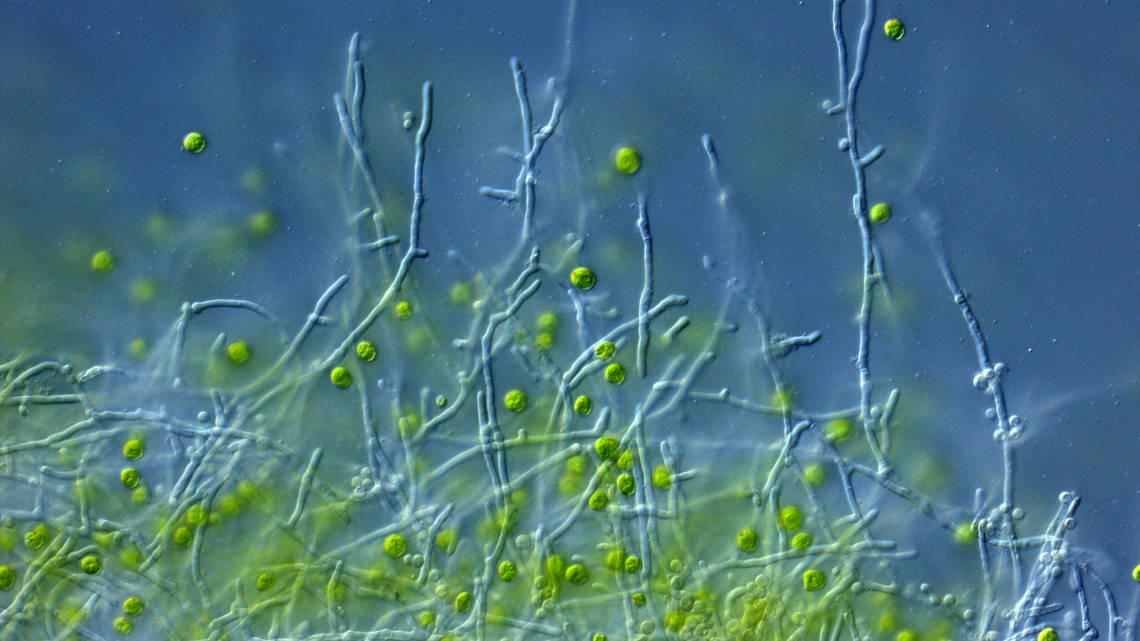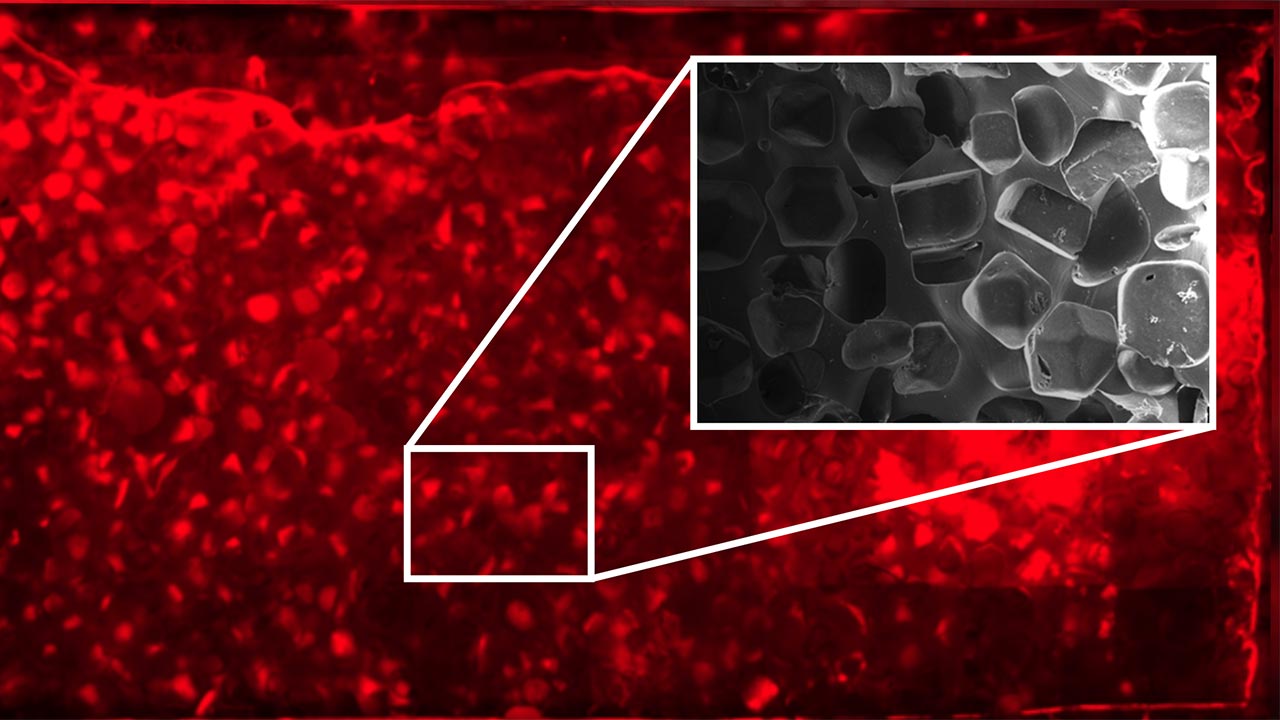Fungus protects algae from bacteria
Researchers observe an unusual alliance of purpose between green algae and molds.

In nature there is a permanent, seemingly invisible battle: Whether in the soil, in water or on our skin - microorganisms compete for nutrients almost everywhere. Some microbes use chemical weapons and secrete substances that harm other microbes. For example, bacteria of the genus Streptomyces produce azalomycins, which kill other unicellular organisms, but also cells of higher organisms such as the green algae Chlamydomonas reinhardtii. However, it has found an unusual protector, as a German research team now reports in "The ISME Journal".
Algae and fungus form a network
The scientists discovered that the mold Aspergillus nidulans and the green alga Chlamydomonas reinhardtii form a lichen-like community. For this purpose the alga even swims actively towards the fungus and its mycelium. "The green algae in particular benefits from this partnership, because they are susceptible to the bacterial agent azalomycin F, which leads to their death," says Axel A. Brakhage, Director of the Leibniz Institute for Natural Product Research and Infection Biology - Hans Knöll Institute (HKI).
Fungus uses antibiotic for metabolism
The team was also able to prove what this protection is based on: The mold uses the antibiotic azalomycin of the bacterium Streptomyces iranensis to incorporate it into certain lipids of its cell membrane. From then on, the active ingredient is harmless to the green algae. In addition, the researchers observed that the combination of the two organisms accelerates the growth of the green algae and increases its cell density.
Antibiotic only harms algae in light
As so often in science, the research team not only provided answers, but also came across new questions. For example, the green algae and the fungus must already have been cultivated together before adding the bacterium, as Brakhage explains. "If the three microorganisms are brought together at the same time, the protective mechanism is not yet effective. It is also unclear why azalomycin only kills the green alga in light and not in darkness.
Complex processes only partially understood
"On the one hand, this example shows the amazing dynamics that prevail in microbial communities, but on the other hand it also shows that we are still in the early stages of researching these relationships," summarizes Brakhage.


